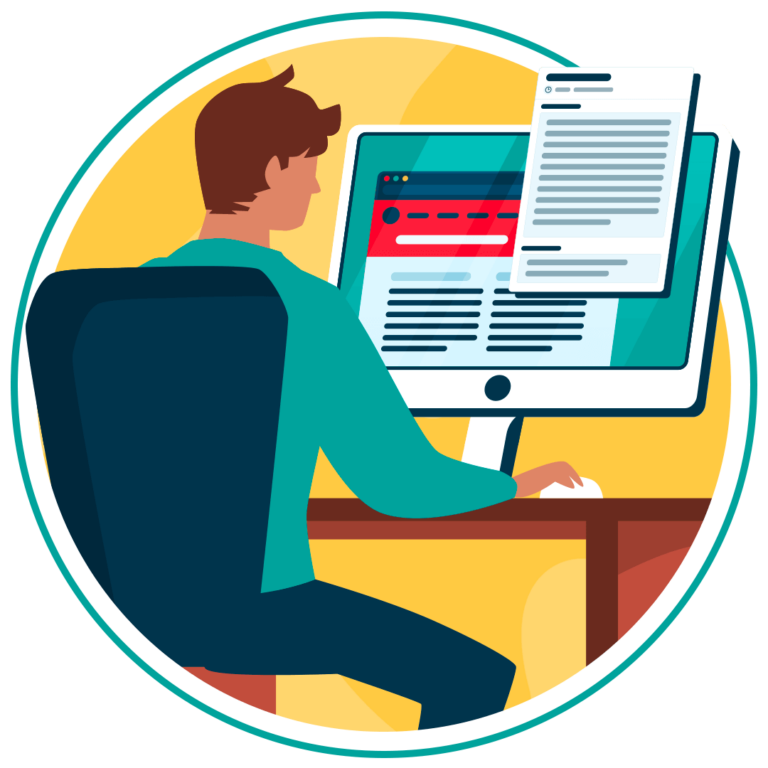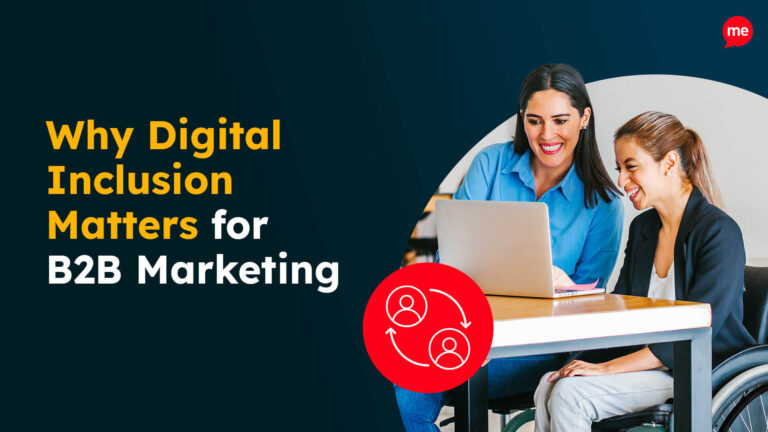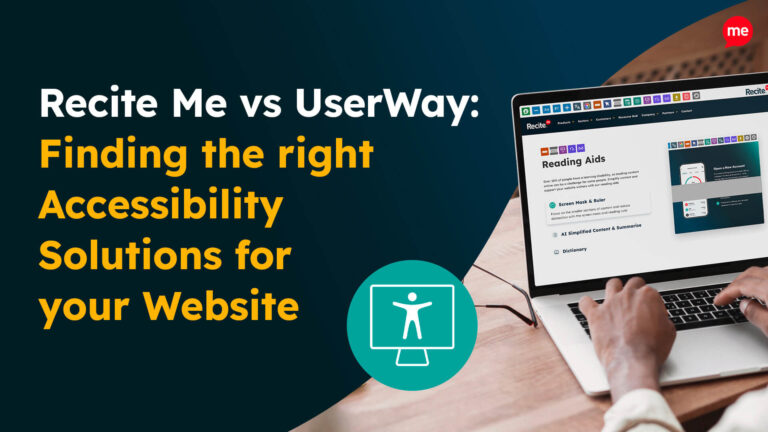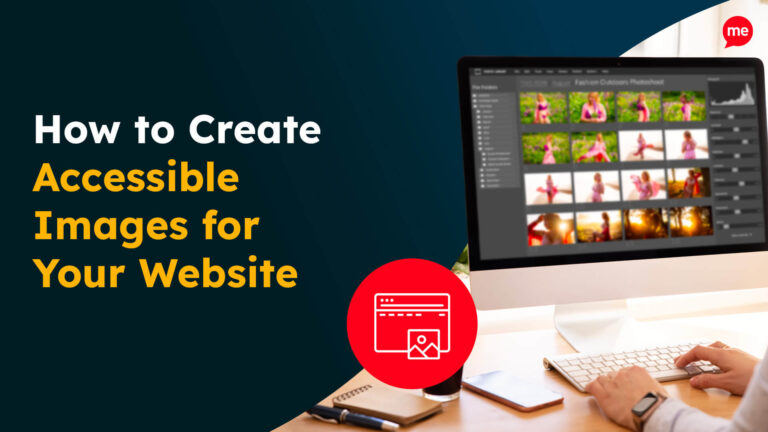Get Your Free Accessibility & Inclusion Toolkit
Download NowAccording to the World Health Organization (WHO), 5% of the world’s population have disabling hearing loss or deafness. Considering that the global internet user base was 5.3 billion in 2023, that is a staggering 265 million internet users who are hard of hearing. As such, ensuring online accessibility for deaf customers isn’t just a legal requirement; it’s part and parcel of growing your online business. This article is your one-stop guide to navigating the how’s and why’s.
What is Web Accessibility?
Web accessibility is a measure of how readily available and comprehensible website content is for individuals with disabilities. The more accessible a website, the less difficulty users with visual, auditory, physical, speech, cognitive, and other impairments have in navigating it. An accessible website could be one that provides assistive technologies, like screen readers, to help visually impaired people digest otherwise indigestible website content. It could also mean subtitling videos and providing transcripts for deaf users.
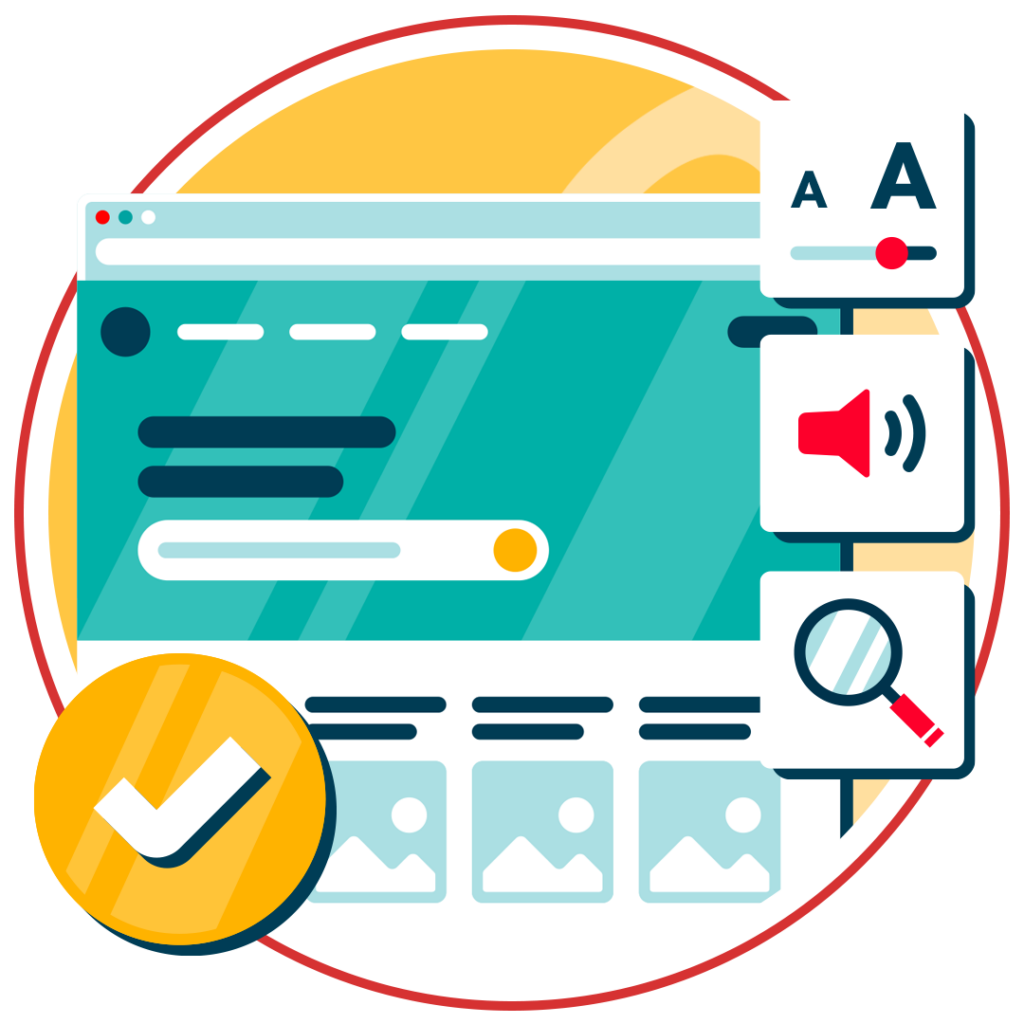
Essentially, ensuring web accessibility is about tearing down inclusion barriers to participation so that everyone, regardless of their abilities or disabilities, can perceive, understand, navigate, interact with, and contribute to the web. Often, the best way to do this is by leveraging an all–in-one accessibility product, like Recite Me’s accessibility toolbar, so that you can address a wide range of needs effectively and at a reasonable cost.
Think of web accessibility like building a ramp next to a staircase. Just as ramps provide access to buildings for people who use wheelchairs, accessible web design ensures that everyone, including those with hearing impairments, can benefit from online content.
Implications of WCAG in Ensuring Accessibility for Deaf People Online
Think of the Web Content Accessibility Guidelines (WCAG) as the rule book for online accessibility. More than just guidelines, however, they are a set of international standards created by the World Wide Web Consortium (W3C) outlining exactly how businesses can go about improving the accessibility of their websites and online platforms. The W3C have left no stone unturned, covering a full spectrum of disabilities and impairments, and deafness is no exception.
According to WCAG best practices, if businesses are to make their websites and online platforms accessible to individuals who are deaf or hard of hearing, they will need to meet a range of very specific requirements. These include:
- Providing alternatives for time-based media: For all pre-recorded audio content, businesses must provide captions or transcripts.
- Ensuring live audio content captions: For all live audio content, such as live broadcasts or webinars, provide real-time captions to ensure that deaf and hard of hearing users can follow along as the content is delivered.
- Offering sign language interpretation: Sign language video insets should be used to accompany audio content wherever necessary.
- Making audio information available in text: This ensures that important auditory information, like alerts or notifications, can be recognised visually through readable text.
- Allowing customizable captions: Allow users to customise the appearance of captions, including the size, colour, and background, to enhance readability and ensure that captions do not obstruct other important visual information on the screen.
- Being consistent with navigation mechanisms: Use consistent navigation mechanisms across web pages to help users with hearing impairments who might rely on text descriptions and familiar structures to navigate the site more easily. This helps in understanding the context and finding information efficiently.
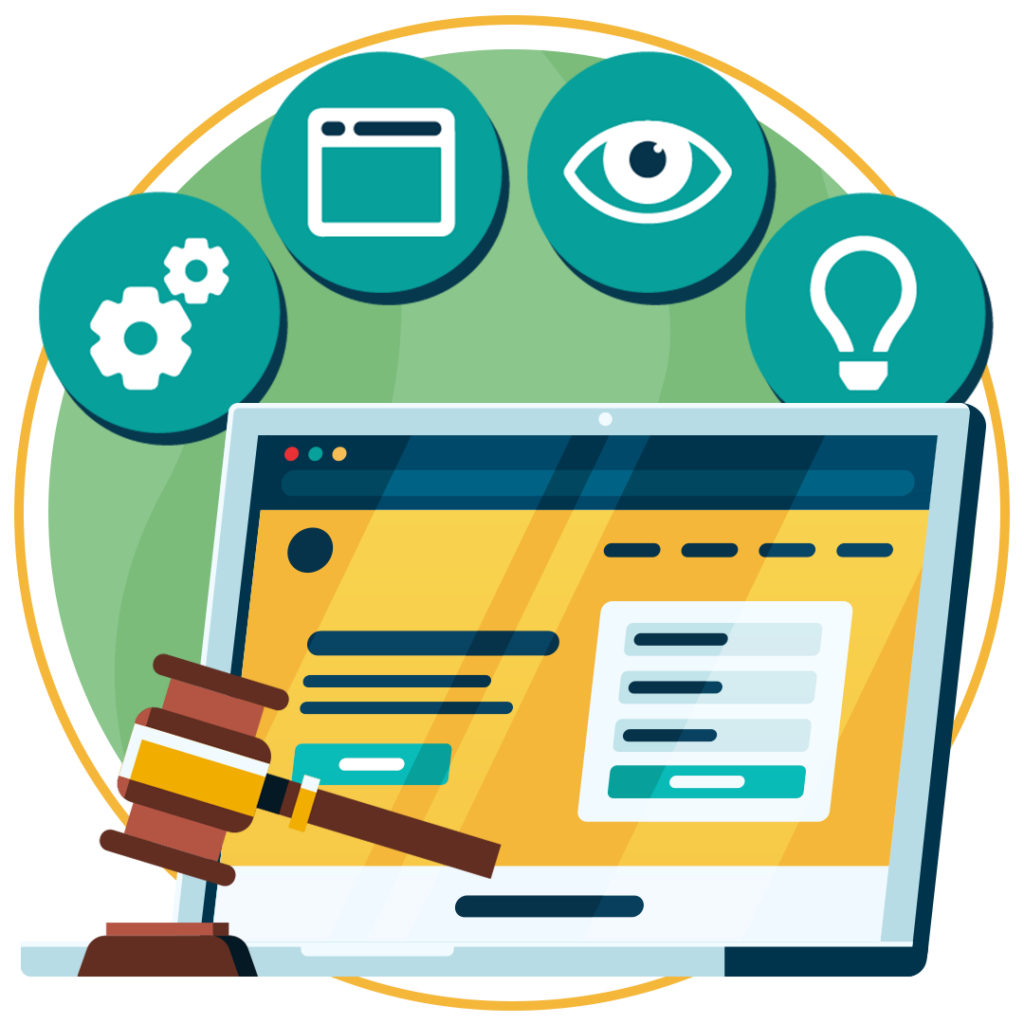
Ultimately, WCAG makes life easy for online businesses by telling them exactly how to create an accessible website for deaf, and other, customers. By adhering to these guidelines, you can avoid compliance issues and sleep easy knowing that your website is an inclusive space for all.

Free WCAG Compliance Check of your Website
Finding WCAG compliance issues is now easier than ever. Recite Me offers a free automated scan of your website’s homepage to highlight non-compliance. You’ll get recommendations on how to fix them, helping to improve your accessibility score.
Top Tips to making a Website Accessible for Deaf and Hard of Hearing Users
It’s all well and good knowing what WCAG requires of your business to be compliant, but what are the most effective ways of getting there? This section provides some top tips for ensuring that your online content, and your business in general, is accessible for users with hearing impairments.
Subtitles and Transcripts
For those who are deaf or hard of hearing, subtitles and transcripts allow them to digest video content in the same way as anyone else. When visuals are combined with some kind of textual representation, it offers an immersive experience very similar to that of an audible video.
Subtitles provide text versions of spoken words and important sounds in videos, allowing deaf and hard of hearing users to follow along. Transcripts, on the other hand, are written versions of audio content, such as podcasts or webinars, that can be used to follow along while listening or as a reference at a later date.
For example, a company that posts video tutorials should include subtitles to ensure that deaf users can understand the instructions. Similarly, a company that hosts a podcast should always ensure accompanying transcripts are made available alongside the audible content to ensure video accessibility best practices.
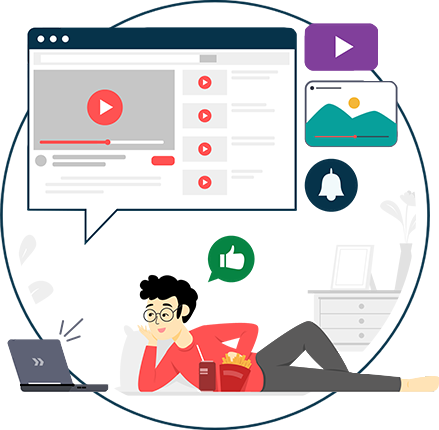
Sign Language Interpreter
Whilst subtitles are a great option for video content, many individuals with hearing impairments rely on sign language as their primary means of communication. Sign language is a complete language with its own grammar and syntax, and for many deaf individuals, it’s their first language.
So, whether for an online seminar or a promotional video, having a sign language interpreter in a video inset allows a significant segment of your audience to understand and engage fully with your material, in the language that comes most naturally to them. Offering this level of inclusivity pays dividends both for your customers and your business.
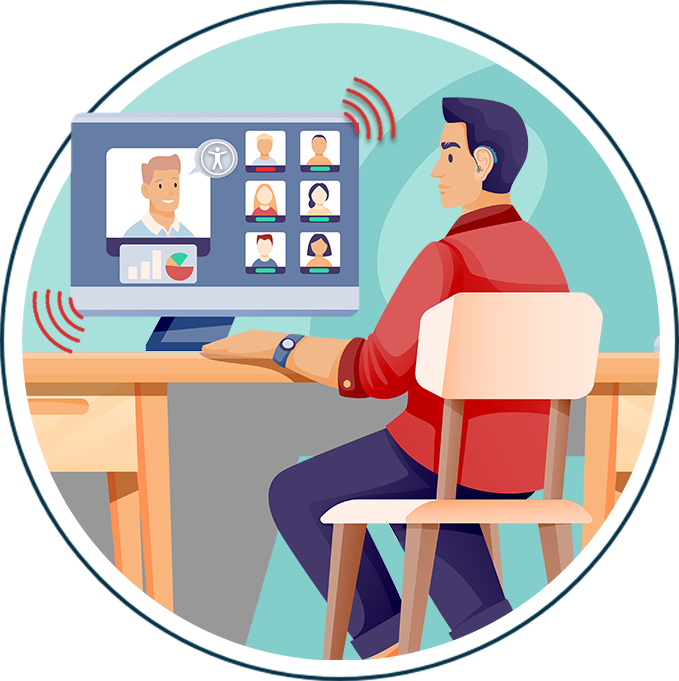
Compatibility with Assistive Technologies
Deafness exists on a spectrum, meaning many people with hearing impairments can still hear, just to a lesser extent. Often, these individuals use assistive technologies like hearing aids and cochlear implants to enhance their hearing, allowing them to interact with people and content without the need for additional support.
However, in order for assistive technologies to work effectively, it is up to online businesses to ensure their websites and platforms are compatible with them. This might involve making sure that your site’s audio content is clear enough for hearing aids to correctly distinguish sounds. It may also involve offering audio settings on your website that allow users to adjust the volume or enhance certain frequencies.
You can learn more about the use of assistive technology for the deaf and hearing impaired here.
Multiple Contact Methods
Not everyone can communicate effectively over the phone. Offering multiple contact methods, such as SMS, live chat, and email, ensures that deaf and hard of hearing customers can reach out in a way that suits them best.
Imagine a customer needing support but being unable to use the phone due to their hearing impairment. If your business offers live chat or email support, this customer can still get the help they need without barriers.
Our 40-page Digital Accessibility & Inclusion Toolkit helps businesses break down online barriers and make a real impact. It offers practical advice on all aspects of digital accessibility, from writing an accessibility statement to accessible website tips and inclusive hiring.

Benefits of Accessibility for Deaf & Hard of Hearing Web Visitors
Whilst there are clear moral and legal repercussions to not making your website accessible, it’s not all stick and no carrot. Ensuring your website is accessible for deaf users brings endless benefits, both for content users and content creators. This section outlines just some of those benefits:
- Increased Independence: Providing deaf users the ability to use your website and its online resources without the need for assistance, instils within them the confidence to complete everyday tasks independently.
- Enhanced User Experience: If users are able to easily digest and understand the content provided to them, their overall experience is better, leading directly to higher rates of customer satisfaction.
- Equal Access to Information: Ensuring all users can access the same information promotes inclusivity and equality more broadly across your business and society as a whole.
- Improved Communication: Offering multiple contact methods for those who are deaf or hard of hearing makes for seamless communication between the business and its users.
- Broader Audience Reach: By making your content more accessible, you reach a wider audience, including those who might have otherwise been excluded, broadening your pool of potential customers in the process.
Business Case for Enhancing Deaf Accessibility Online
As much as you may want to believe that investing in accessibility is a completely selfless endeavour, the truth is, your business stands a lot to gain. That is because providing an inclusive online environment that is tailored to the needs of deaf customers, brings with it more than just legal compliance and moral obligation. This section puts forward the business case for web accessibility, highlighting some of the most compelling reasons why you should start investing in it now:
- Expanded Customer Base: By making your website accessible, you open your doors to a larger audience, including millions of deaf and hard of hearing individuals worldwide, or in other words, millions of potential clients.
- Enhanced Brand Image: Companies that prioritise accessibility show that they are socially responsible, enhancing their brand image and reputation.
- Increased Customer Loyalty: Accessible websites show customers that you care about their needs, leading to greater loyalty and repeat business.
- Better SEO Performance: Many accessibility practices, such as providing transcripts and captions, also improve search engine optimisation (SEO), helping your site rank higher in search results.
- Legal Compliance: Adhering to accessibility guidelines helps avoid potential legal issues and demonstrates your commitment to inclusivity.

Start your Accessibility Journey with Recite Me
Act today to ensure accessibility compliance and mitigate legal risk. Get started on your website accessibility strategy by working through the following action points:
- Contact our team for more advice about WCAG standards and Accessibility best practices.
- Find out more about the Recite Me Web Accessibility Scanner.
- Schedule a free demonstration to learn how our technology can help you.
- Run a free scan of your website for WCAG 2.1 AA compliance.
